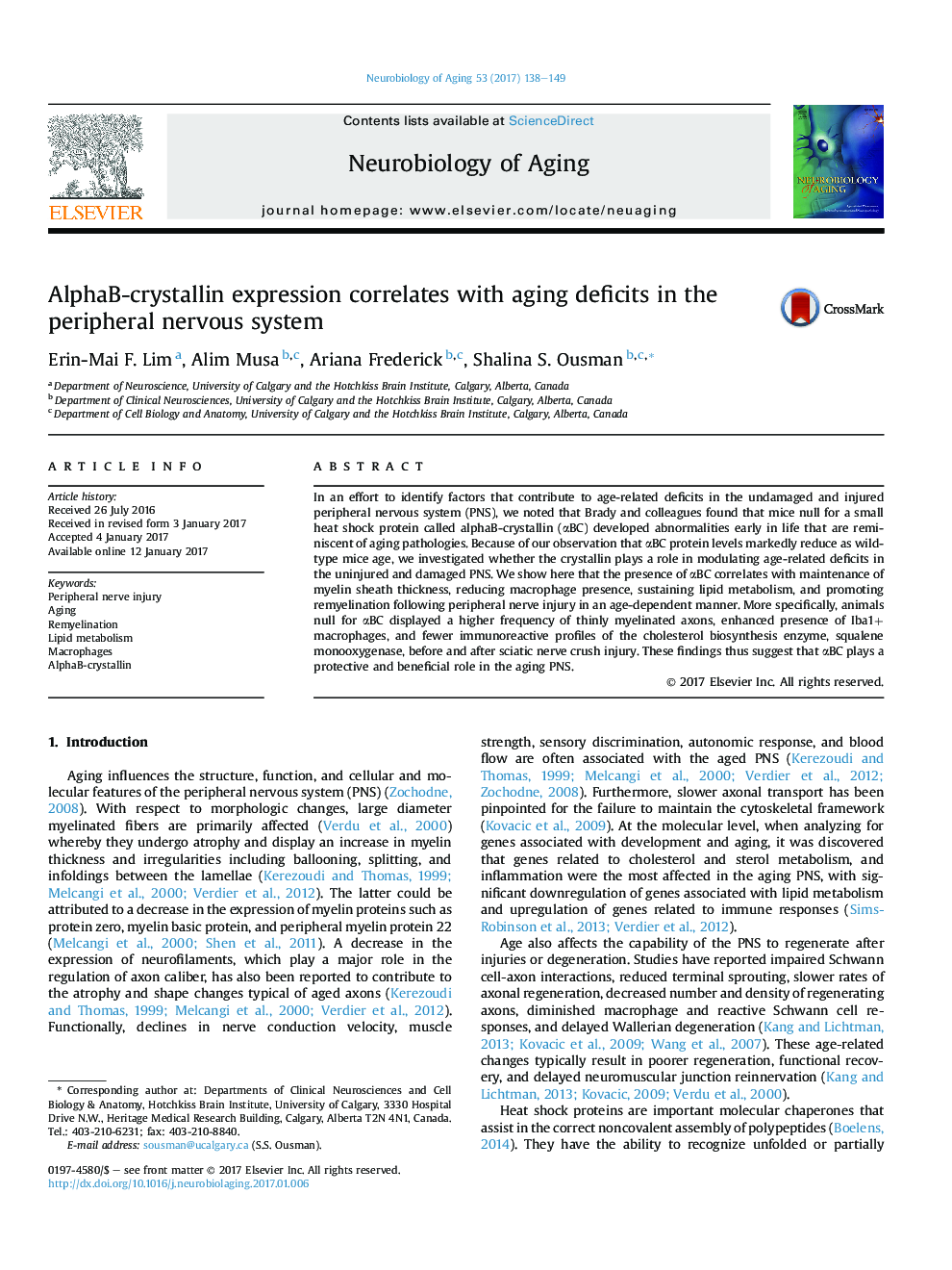| Article ID | Journal | Published Year | Pages | File Type |
|---|---|---|---|---|
| 4932616 | Neurobiology of Aging | 2017 | 12 Pages |
Abstract
In an effort to identify factors that contribute to age-related deficits in the undamaged and injured peripheral nervous system (PNS), we noted that Brady and colleagues found that mice null for a small heat shock protein called alphaB-crystallin (αBC) developed abnormalities early in life that are reminiscent of aging pathologies. Because of our observation that αBC protein levels markedly reduce as wild-type mice age, we investigated whether the crystallin plays a role in modulating age-related deficits in the uninjured and damaged PNS. We show here that the presence of αBC correlates with maintenance of myelin sheath thickness, reducing macrophage presence, sustaining lipid metabolism, and promoting remyelination following peripheral nerve injury in an age-dependent manner. More specifically, animals null for αBC displayed a higher frequency of thinly myelinated axons, enhanced presence of Iba1+ macrophages, and fewer immunoreactive profiles of the cholesterol biosynthesis enzyme, squalene monooxygenase, before and after sciatic nerve crush injury. These findings thus suggest that αBC plays a protective and beneficial role in the aging PNS.
Related Topics
Life Sciences
Biochemistry, Genetics and Molecular Biology
Ageing
Authors
Erin-Mai F. Lim, Alim Musa, Ariana Frederick, Shalina S. Ousman,
